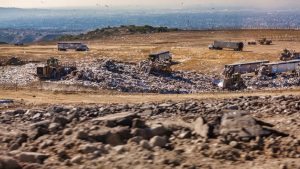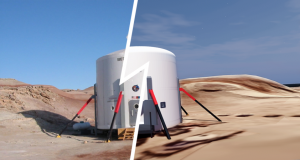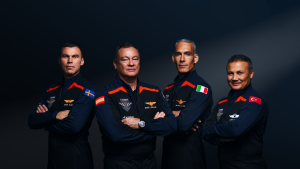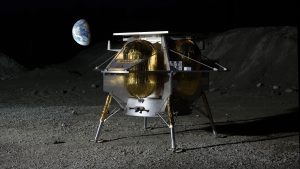The Loss Of SpaceShipTwo Should Not Be A Show-Stopper
 It’s kind of been a rough week in the aerospace world. An Antares rocket set to make a delivery to the International Space Station explodes only a few seconds after launch. Virgin Galactic’s SpaceShipTwo suffers a fatal “anomaly” that killed one pilot and seriously injured another. Two losses in a week is pretty unusual for dealing with the aerospace world. Maybe it’s a sign that some people are trying to move too fast and take dangerous shortcuts like (in the Antares case) recycling old Russian hardware that has been in storage for decades.
It’s kind of been a rough week in the aerospace world. An Antares rocket set to make a delivery to the International Space Station explodes only a few seconds after launch. Virgin Galactic’s SpaceShipTwo suffers a fatal “anomaly” that killed one pilot and seriously injured another. Two losses in a week is pretty unusual for dealing with the aerospace world. Maybe it’s a sign that some people are trying to move too fast and take dangerous shortcuts like (in the Antares case) recycling old Russian hardware that has been in storage for decades.
In the SpaceShipTwo case, I prefer to believe that there are risks involved when developing any kind of new technology. In the Yeager era, it was pretty common for test pilots who had been involved in the business for a while to know one or two colleagues who had died in a crash. Chuck Yeager himself suffered severe burns in one accident. They knew it was risky even if they often took the attitude of, “It won’t happen to me.” They still flew experimental airplanes like the X-1 and the X-15 because they knew it was worth the risk and, anyway, they were competing for speed records.
The two test pilots who were flying SpaceShipTwo that day knew the business of testing a new spacecraft is a risky one. I’m sorry that they’re getting perceived as dying for space tourism in some quarters. If this was just a matter of sending wannabe Dennis Titos into space, perhaps they wouldn’t have gotten involved. SpaceShipTwo was never meant to push new frontiers, but it could be something that’s on the level of NASA’s Mercury Program’s suborbital flights during the early 1960s. Mercury was never meant to do much more than prove that men and some basic hardware could function in a region that was just above Earth’s life-supporting atmospheric layers. Gemini built on that to develop rendezvous capability, and of course there were the Apollo lunar landings. I could imagine a Gemini-level version of SpaceShipTwo being developed to deliver people to relay stations so that they can connect with flights to the Moon, Mars or the asteroid belt within the next few decades.
The CNN Coverage
The two pilots who were flying the spacecraft that day should not be forgotten and their sacrifice should not be wasted by quitting now. Most currently active astronauts have seen the footage of the Challenger and Columbia disasters and know about the Apollo 1 fire. When retired astronaut Jerry Linenger, who had survived a fire on Mir, heard about Richard Branson’s plans, the very first thing he advised Branson to do was get some good liability insurance because he would have setbacks. The fatalities and near-fatalities are something that’s usually in the backs of their minds and they spend many hours in simulators every week to make sure they’re ready to react when something unexpected happens. If they let the risk paralyze them, though, they wouldn’t be astronauts. Like the two test pilots who were on SpaceShipTwo’s last flight, every astronaut and cosmonaut understands that space travel is so important to the future of humanity that it’s worth the risk to a few courageous individuals.
It would be good if the media would not hypothesize about what might have caused the malfunction without more data of the sort that will come out during the official investigation that is expected to last several days. Only a few things are known for certain at this point. Virgin Galactic was testing a new kind of fuel that could theoretically give better performance. The “in-flight anomaly” occurred about two minutes after SpaceShipTwo separated from its mothership, called WhiteKnightTwo. It was observed to tumble in pieces after the anomaly occurred. Virgin Galactic has paused flights for the rest of the year.
It’s not hubris to take the risks needed to thoroughly test hardware before declaring a spacecraft ready for routine use even if it means sending up professional test pilots who understand the risks and think they’re worth taking. The new fuel type was believed to be workable based on data collected by engineers working with it in a ground test environment and the whole point of “live,” operational flight testing like this is to see how new technologies work in the real world. This would only involve pure unwarranted hubris if Virgin Galactic was already sending paying space tourists to the edge of space and this accident involved civilians who trusted the hardware to already be thoroughly tested and ready to go.
Events like this one are stark reminders of the risks involved in space travel but shouldn’t be show-stoppers. The destruction of SpaceShipTwo and the sacrifice of the two test pilots should not stop private space efforts. The loss of the Apollo 1 crew was a reminder to take the time to do the job right but did not stop the Apollo lunar landings. The loss of Challenger was a reminder that mission rules exist for a reason but did not stop the space shuttle program. I’m sorry to hear that one test pilot died and another was seriously injured in this recent disaster, but we shouldn’t rush to conclusions regarding the cause. I hope this doesn’t mean a complete halt to Virgin Galactic’s efforts to produce a spacecraft that is capable of taking individuals to the edge of space.







